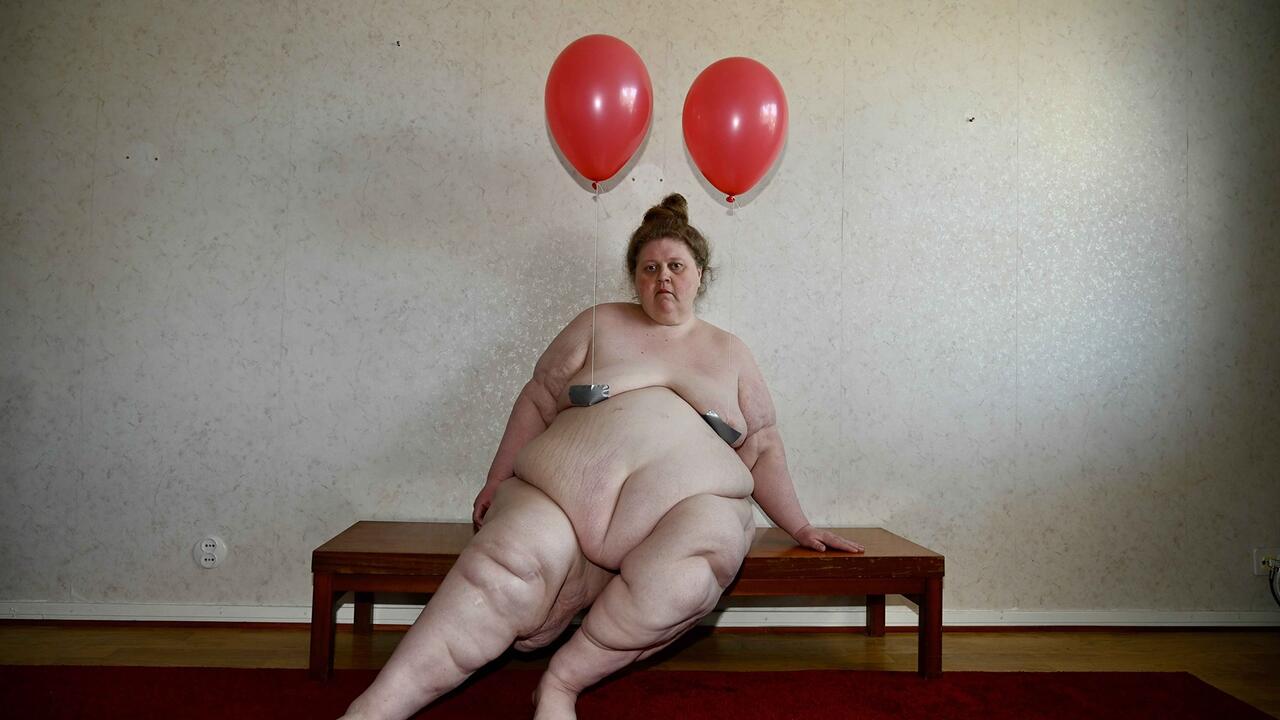Martin Kersels
Gaston Bachelard wrote that 'a house constitutes a body of images that give mankind proofs or illusions of stability'. The unease attending such fragile assurances of domestic equilibrium underlies much of Californian artist Martin Kersels' recent rambunctious installation. An alumnus of UCLA known for his waggish twist on body art, Kersels built Tumble Room (2000) as a full-scale replica of a typical American teenage girl's bedroom, flipped it on its side and suspended it above the floor of the gallery within a cylindrical steel armature which rotated briskly at a steady four r.p.m. Tumbling like a giant Lotto machine for the show's duration, the cheerfully pink-wallpapered room gradually churned and ground its everyday contents: furniture, draperies, stuffed animals, boy-band posters and cutesy decorations; the perpetual drag of begrudging furnishings producing a cacophonous din. Over the course of the installation, a sort of sped-up process of entropy reduced the room's genteel fixtures to a fine mulch, the kind of substance you might use to fertilize your lawn, or insulate the hollow walls of your prefab home.
As a Southern Californian, Kersels draws from a rich collection of associations: suburban teen culture, earthquakes, natural disasters and the omnipresent movie industry. Indeed, an accompanying video of the artist and a young girl taking turns inside the gyrating room, Pink Constellation (2001), pays low-budget homage to the tumbling house in movies, from Buster Keaton's 1921 classic, The Boat, to Judy Garland's tornado-twirled farmhouse in The Wizard of Oz (1939) and Fred Astaire's 360° tap-dancing promenade around a hotel room in Royal Wedding (1951). In one sequence, the girl, who could be the room's inhabitant, negotiates the jerky, stomach-turning rotations with an eager frankness and childlike grace that would do Dorothy and Astaire proud. She jumps, sways and cavorts along the walls and ceiling, blithely ignoring the potential dangers, which suggests that despite the insecurity of weightlessness, such physical and psychological destabilization can also offer a passage from the dully familiar to the beguilingly alien. This scene is contrasted by the next, in which the portly artist is tossed around the room like a disoriented gerbil on an exercise wheel, groping and stumbling with the awkward comedic despair of a silent movie fall guy. Besides incidentally illustrating some basic physical laws of gravity and motion, the subjects' differing responses to the same given circumstances reinforce the impression that some sort of rough and tumble behavioural experiment is underway.
The hysterical nervousness of physical comedy, and the latent aggression implicit in our voyeuristic glee at witnessing the misfortunes of others, is much on display in Kersels' buffoonish performance. Like Keaton, Kersels recognizes that the cruel repetitions of slapstick, perfected on the back lots and soundstages of Hollywood, are never far from a certain real-life sensation of hopelessness, alienation and terror. Keaton's stone-faced innocence and stubbornness in the face of overwhelming adversity, and his obstinacy born of misplaced hope, is the ghost haunting this installation: Sisyphus with a straw hat.
Kersels' Southern California provides a suitable laboratory for observing various tectonic slippages and disruptions, whether cinematic simulations, geological realities, or the fruits of human unpredictability. Set against a social context in which a bubble gum teen world can in a moment be turned upside-down into a collegiate killing ground with authentic bullets and blood, Kersels' topsy-turvy child's room hardly seems like a merely gratuitous exercise in the expanding art funhouse genre.
Certainly, there is nothing new under the Californian sun, least of all the theme of innocence lost. Kersels' debt to Paul McCarthy (his teacher at UCLA) and his grandiose high-jinks notwithstanding, the artist's vaudevillian demonstration of the paper-thin fictions we construct around ourselves is a challenge well met. Having begun its existence as an enclosure as generic as any child's hasty crayon rendition of a house, by the show's close Kersels' poor little bedchamber was left distinctly traumatized and transformed. A lot can happen under even the humblest of roofs, which goes to show that an object defined by intersecting walls and floors is ultimately nothing more than an intimate repository for our most misguided actions, illusory expectations and imaginative desires. It clings closely to us, to paraphrase Bachelard, just as we cling to it.














